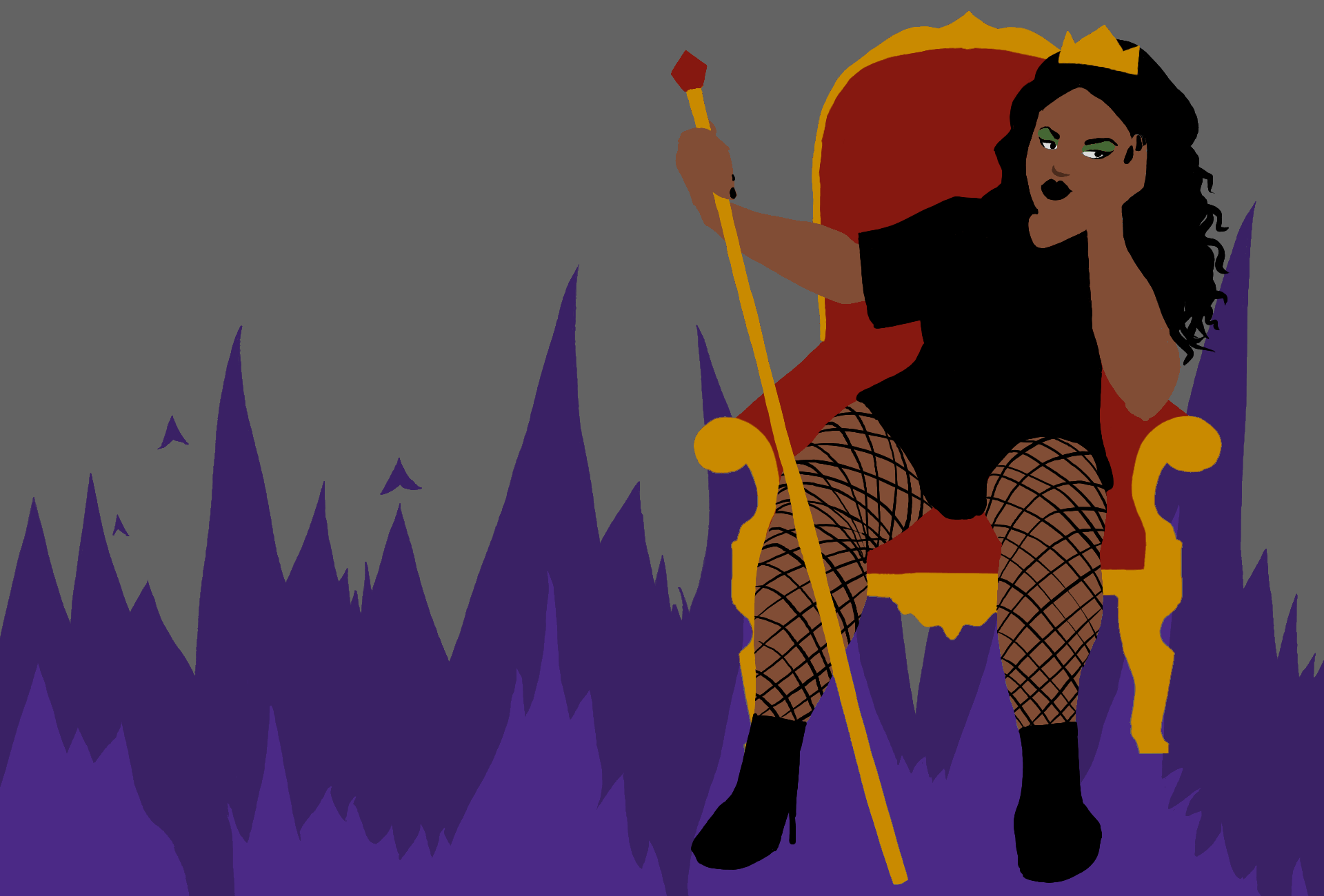
I went to my first and only pride parade three years ago with prior warnings of old men who took the parade as an advantage to walk around naked in my head. However, when I got there, public indecency was the least offensive thing I saw. Far worse were the gentrification-chic floats, choreographed dances around ten-foot-tall Coke bottles, and souvenir pins that at first glance paid tribute to Harvey Milk, but were actually sly advertisements for the Harvey Milk terminal at the San Francisco International Airport.
By the end of the day, I didn’t mind the sight of the occasional genital or someone wearing only BDSM gear, because it meant that there was still something genuine left among the rainbow glitter.
Queer resistance exists, of course, but it won’t be found in the places where corporations are comfortable. It’s easiest to understand this by looking at its origin.
As in all punk culture, queer punk lacks a single traceable timeline, but most people consider queercore to be the most influential queer punk movement. It emerged in the mid-1980s as a response to homophobia in the larger punk scene. Originally, punk had been more accepting of those who deviated from the norm, but stigma from the AIDS crisis and the expansion of the punk movement changed this.
Equally formative in the emergence of queercore was a push toward assimilation in broader gay culture. Assimilation was, and still is, a survival tactic used by LGBTQ+ people in response to the violence they faced by threatening the status quo. Those who chose to assimilate were frustrated with more visibly queer people, who they thought made them look bad. In the queercore movement, being accepted by the heteronormative world was the least of their concerns. It rejected assimilation in favor of an approach that disrupted harmful sexual and gender categorization.
The main elements of queercore were music, experimental films, and zines. Zines are small-circulation, self-published magazines, ideal as an outlet for those within a niche community to express themselves and share ideas.
Many trace the start of the queercore movement to a zine series called J.D.s, which featured bands, music reviews, short articles, and pornography. J.D.s was made in Toronto by a small group of friends who, by widely distributing the zines, were able to convince others that they were an entire movement. In this way, queercore was able to spread.
And of course, queercore was held together by bands like Tribe 8, Nervous Gender, Pansy Division, Dicks, Phranc, and more, who were devoted to making songs that challenged gender norms. Experimental films were a big part of the movement too. They made use of bizarre and pornographic imagery, and were led by filmmakers like Bruce LaBruce and Vaginal Davis.
Around the mid 1990s, queercore expanded beyond its original creators’ vision and into other types of music. Today, queer creators are some of the most influential creators in many genres, especially pop and hyperpop.
I’ve listed some of the biggest names in queer punk history, but this article is by no means a comprehensive history of queer punk. Queercore was just one branch of queer punk, and it often fell short of addressing the violence within the state in its entirety. Since the biggest names in the scene were almost all white people, systemic issues like white supremacy and colonialism went unchallenged.
This is what I like about modern queer punk music. There is no unifying label like in queercore, so different people and ideas can circulate around it. In a way, queer punk is still being invented.
If you’re interested in getting into this genre, here are my top album recommendations. This list isn’t based on reach or influence — that would represent the genre as a centralized movement led by a few cornerstone bands, which it is not. Instead, these are just some solid, underrated, currently-active artists who deserve a larger following than what they have.
“Growth” – Screaming Toenail
Screaming Toenail is a small band from London. If you only listen to one of these albums, listen to this one. The cover art labels it “anti-colonial queer punk,” which summarizes it perfectly. “Growth” consists of sound bytes taken from various news reports and that one Eartha Kitt interview. The content of the album ranges from aggressive mocking of racist conservative beliefs, to tender moments like the closing track, which is a cover of a song from Steven Universe.
If you want to listen to just one song to see if you’ll like the album, try: Crystal Queer
“12 Nudes” – Ezra Furman

Ezra Furman writes a lot about the extreme toll that capitalism takes on mental health and the additional complication of being queer at the center of that. This particular record is no exception, but it takes a stance that’s angrier and more desperate than previous albums, so it has a satisfying mix of depression and rage.
Song: Rated R Crusaders
“Pleasure Venom” – Pleasure Venom

This is the hardest album of these three. It’s short and full of anger, so if you’re looking for that, this one is your best bet. The lyrics are pretty esoteric, but they deal with themes of sex, absurdity, racism, and anti-capitalism.
I’m not actually sure if this band calls themselves queer, but it has the vibes for sure. In some ways, queerness is more about breaking down boundaries and opposing structures of violence than whether or not a person chooses to use a certain label or disclose their sexual orientation.
Song: Deth
